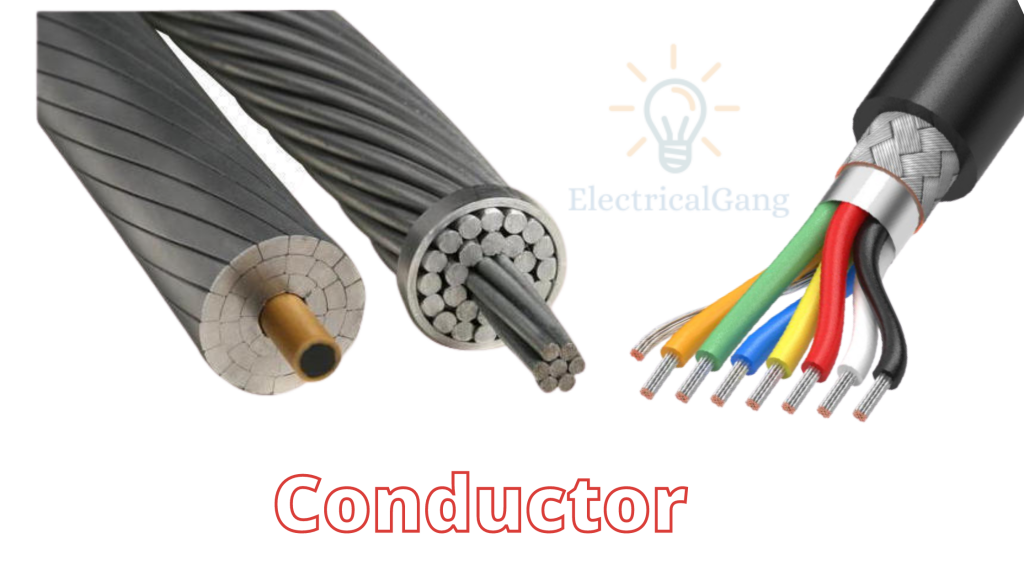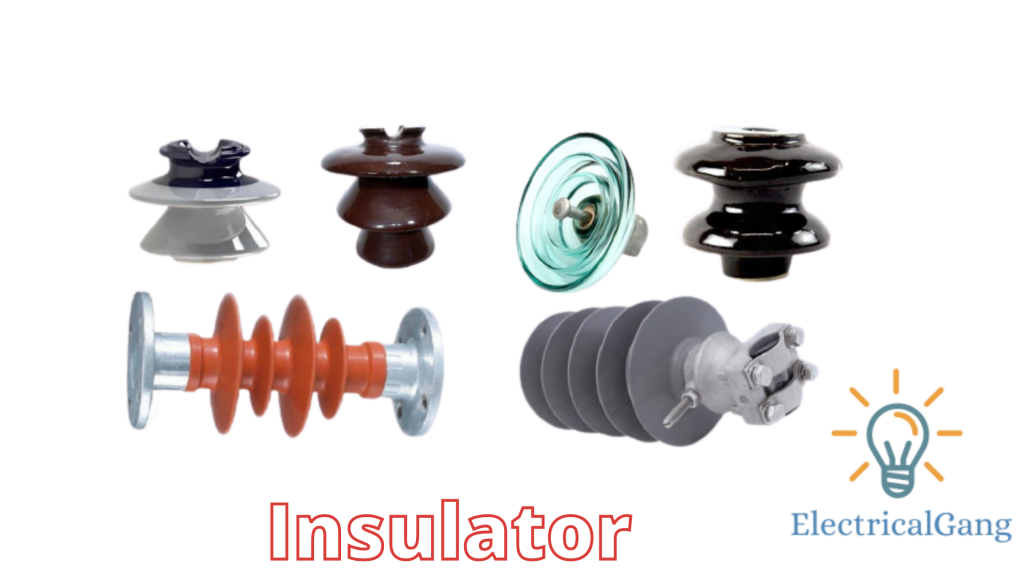
We all know that the difference between an element around us is different depending on its physical properties. Has physical properties such as phase, flexibility, color, texture, solubility, polarization, etc. But the classification of an element is determined on the basis of its electric charge conductivity such as conductors and insulators.
For example, if we connect any bulb with a string or plastic or wood and pass a current through it, the bulb does not turn on. But if we do this process with metallic wire instead of wood or plastic, the bulb will turn on. From this observation, it can be determined that some elements allow the flow to pass while some do not. So in today’s article, we will see what carriers and insulators are and discuss their examples and uses in detail.
Also Read: What Is ACSR Conductor | Types Of ACSR Conductor | Properties and Its Advantages
What are Conductors and Insulators?

Definition of Conductors: A conductor is a monolithic element or substance that allows current to flow from itself. Its main function is to allow electricity to pass through it. These are able to conduct electricity as the electrons of current flow through them easily. The main thing about a conductor is that it allows the conversion of light or heat from one source to another.
When an object or object is given electric power it distributes it over its entire surface. The main reason for this is the electrons in the object. The best examples of this are metals, animals, earth, human beings, etc. due to which we can feel the shock of electricity.

Definition of insulator: A substance that prevents electricity from passing through itself. The main function of this element or substance is to resist the flow of current as well as heat through them. These are usually solid in nature and are used in various places. The insulator differs from the conductor due to its resistance-like property The best examples of insulators are wood, cloth, glass, mica, etc.
It is used as a protective shield as it provides protection against noise, lightning, and heat.
Also Read: What is HRC Fuse | Construction | Working Principle | Types Of HRC Fuse
Examples Of Conductors and Insulators:
The following example can be included in conductors and insulators. All metals like gold, silver, copper, aluminum, iron are good conductors of electrons. Because the flow of electrons will go from one atom to another.
Copper, for example, is the best conductor. Because it allows electrons to pass through without any kind of obstruction. Aluminum is also a good conductor but it allows fewer electrons to pass through than copper. Due to its low weight, it is used extensively in the manufacture of cables.
Let us understand from the example of electrons in a bulb. Turn on a switch so that the current passes and the bulb is turned on and light is emitted. Silver is also the best carrier because of its high cost it is not affordable in general use but it is used in special devices of satellites. The best examples of insulators include rubber, glass, pure water, oil, air, diamonds, dry wood, dry cotton, plastic, asphalt, etc.
Also Read: Types of Electric Poles in Overhead Transmission Lines
Difference Between Conductors and Insulators
| Sr No | Conductors | Insulators |
| 1 | Allows the flow of current through the conductor to pass easily. | The insulator does not allow the current to flow easily |
| 2 | Electric current can be felt at its ends | No problem as the charge does not pass into the insulator |
| 3 | The resistance of the conductor is very low. | The resistance of the insulator is very high |
| 4 | The electron moves freely inside the conductor | Electrons do not move freely inside the insulator |
| 5 | Examples of conductors are copper, gold, silver, iron, etc. | For example wood, cloth, rubber, etc. for insulators |
| 6 | It is used to make electrical devices | This is used in insulating electrical devices for safety purposes |
Applications Of Conductors and Insulators:
Some of the applications of the Conductor are as follows.
- Mercury is used in thermometers to measure human body temperature
- Aluminum foil is used to keep food warm for a long time.
- Conductors are used in car radiators to remove heat from car engines.
- Iron plates are made of steel which is used to absorb heat quickly.
The following are some of the applications of insulators.
- In the electrical panel so that the current does not pass through the body.
- As a thermal insulator that blocks heat from one area to another.
- It is used in making thermoplastic bottles, in walls, and in fireproofing ceilings.
- Sound insulators can help control noise levels so use them in conference halls, cinema halls, large buildings to make them noise-free.
Like this post? Could you share it with your friends?
Suggested Read –
- Difference Between MCB and MCCB | MCB VS MCCB
- Star to Delta Conversion and Delta to Star Conversion
- Types of Losses in a Transformer | Efficiency Of Transformer
- What is a MOSFET | Construction Of MOSFET | Working Principle Of MOSFET | Types of MOSFET | Applications Of MOSFET
- What is a Clamp Meter | Construction of Clamp Meter | Working Principle of Clamp Meter | Application of Clamp Meter